Introduction
Income serves as the heartbeat of every business as it mirrors the sum earned through product sales or services rendered; however comprehending revenue delves deeper than mere figures. It entails evaluating the future growth prospects of a company along, with its market standing and financial stability.
In this piece of writing we'll delve into the ideas behind gross revenue and net revenue in the realm of financial reporting and break down how they are computed. Whether you're running a business or investing money grasping the significance of these indicators is key to making choices and steering towards lasting prosperity. So without ado lets dig deep into the disparities between gross and net revenue understand their formulas with real life instances and appreciate their significance, in the financial domain.
Understanding Gross Revenue
Total income is like the heartbeat of a business – it's the amount of money generated from selling products or services without factoring in any costs yet. Imagine a marketplace with all its sales adding up before accounting for expenses like renting stalls and buying supplies – that's similar, to how total income works. To put it in perspective; think of running your neighborhood bakery where every sale of a cupcake or loaf of bread contributes to your overall income. This number is vital as it emphasizes the magnitude of your actions and client foundation without going into the details of production expenditures or operational expenses.
Exploring further into revenue entails examining the retail sectors performance as it was estimated to reach close to a $5 trillion milestone by 2023. These impressive figures highlight the number of transactions carried out before factoring in production or operational expenses. In terms of the aspect of profitability, gross profit plays a role - this is essentially your earnings, after subtracting the direct expenses associated with goods sold (COGS) serving as a clear gauge of your company's fundamental profitability.
For example; when a bakery invests in flour and eggs and baking supplies. Those are regarded as the goods sold (COGS). To gauge the financial condition of the company deduct these expenses from the overall income obtained. Utilizing this formula where Gross Profit equals Sales Revenue minus Cost of Goods Sold can aid you in evaluating how well your enterprise is performing. The significance of this is especially evident in the professional services industry, covering fields like marketing and consulting; for example, management consulting alone generated a substantial income of $365 billion, in 2022.
When dealing with obstacles like Lemonaid Healths difficulties in acquiring customers and allocating media budget in the telehealth industry landscape. Including total income information is crucial, for organizations of different magnitudes. Including yours. To plan strategically and enhance market presence and profitability.
What is Gross Revenue?
Total income is a financial calculation that encompasses all the funds a company earns from its main activities such as selling products or services prior to deducting any expenditures to demonstrate the firm's capacity to generate cash from its primary operations without taking into account direct production expenses like materials and labor which are essential for calculating gross profit; understanding total income is vital in evaluating a company's potential for growth and market presence. In the case of a telehealth firm like Lemonaid Health, as an illustration; total income would encompass all earnings from its online medical offerings before deductive costs related to rendering those services are considered.
The importance of this measurement is emphasized by the choices that businesses take to enhance it further. Innovative strategies, such as offering installment options or exchange opportunities, aim to enhance accessibility to products and have the potential to increase income by achieving higher levels of sales. These approaches highlight the importance of income as a gauge of an organization's operational success and its ability to attract and support customers effectively.
In the realm of business operations and finances also demonstrates how market conditions and business strategies can impact a firm's success by showcasing these factors at work in the wider business environment. Amazons recent increase in operating profits demonstrates the significant influence that strategic measures such as downsizing can have on the overall financial position and ultimate shape of a business.
Businesses seeking expansion often initiate a cash flow assessment to assess their existing expenditures and income streams effectively. This assessment assists in potential areas where costs can be reduced and illuminates new income sources that could collectively enhance overall earnings. By understanding the income and implementing strategies to strengthen it, businesses can navigate the competitive business environment and build a strong groundwork for long-lasting success.
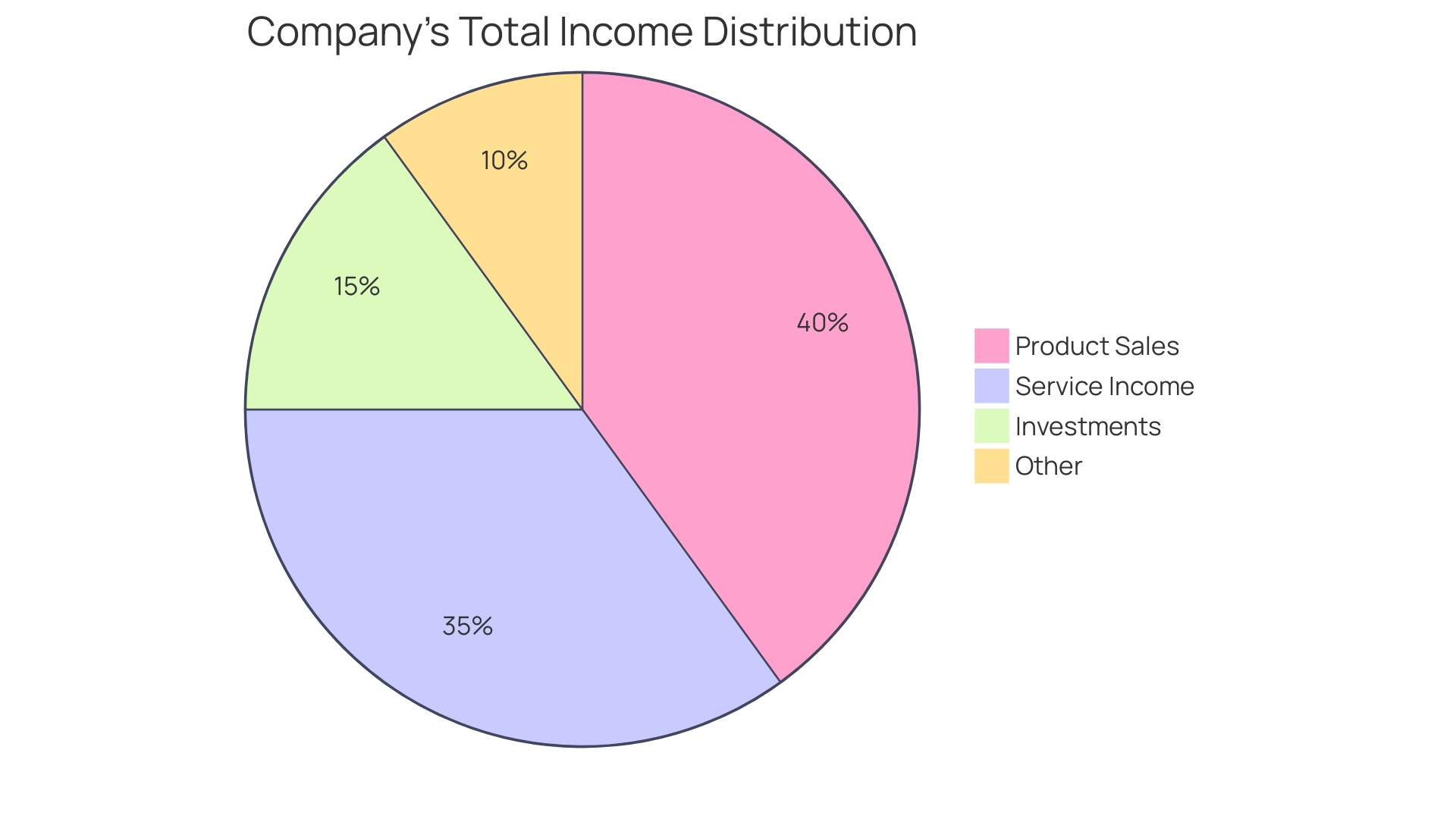
Gross Revenue Formula
When trying to understand income, think of it as the overall measure of your organization's earnings on a broad scale—it includes all sales and various sources of income before any subtracting is done Although the formula, for calculating it may appear simple at glance—just adding up total sales and other income—it's actually how this number is interpreted and handled that really matters.
One such example is the motivating tale of Monday.com that highlights the importance of expansion and a strong financial plan in action. The company has emerged as a guiding light, for software firms by illustrating ways to stay financially prosperous during periods of slower growth.
Besides that, reports from the industry indicate incentives to prioritize overall income. The retail industry is projected to reach to $5 trillion by 2023 while service based professions such as consulting brought in an impressive $365. With a year behind us the healthcare sector remains robust making up a substantial 18% of the GDP. These statistics highlight the importance of understanding and optimizing income, for long term prosperity.
Understanding the viewpoints of experts is important too as they emphasize the significance of understanding your gross margin. Your revenue minus the cost of goods sold. For the success of your company operations.. This key indicator reveals the strength of your organization structure. Serves as a reflection of how you set prices and manage costs effectively.
Aiming for a gross margin is an intelligent approach that can enhance your overall profits significantly. Remember that every additional dollar in margin has the potential to increase your net earnings and promote a positive financial perspective, for the future growth and stability of your enterprise.
By examining your cash flow situation and analyzing expenses comprehensively you gain the ability to predict upcoming income and even discover potential new sources of revenue This forward thinking strategy empowers you to set up your business for long term prosperity guaranteeing that each choice made strengthens its financial stability
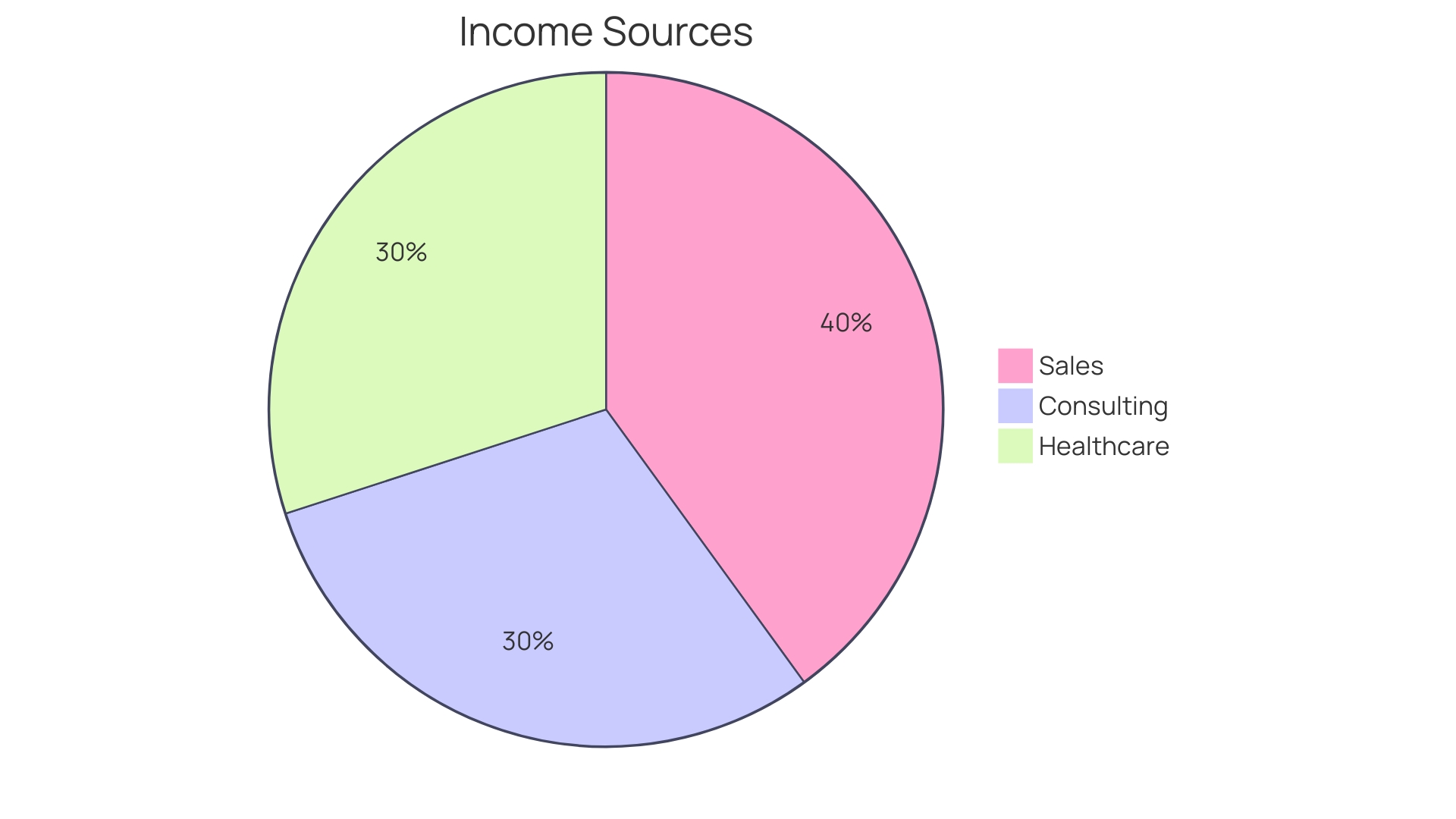
Gross Revenue Example
Understanding the idea of revenue can be clearer with a practical example in mind; Imagine a company like ABC Company experiencing a month of sales where they sell products worth $10,000 alongside earning an extra $2,000 in interest income on top of that amount. By adding up these two sources of income. Product sales and interest earnings. We observe that ABC Company's overall gross earnings, for the month, amount to $12,000. This demonstration emphasizes the fundamental idea of income. It represents the total amount of sales and additional earnings before any deductions are subtracted.
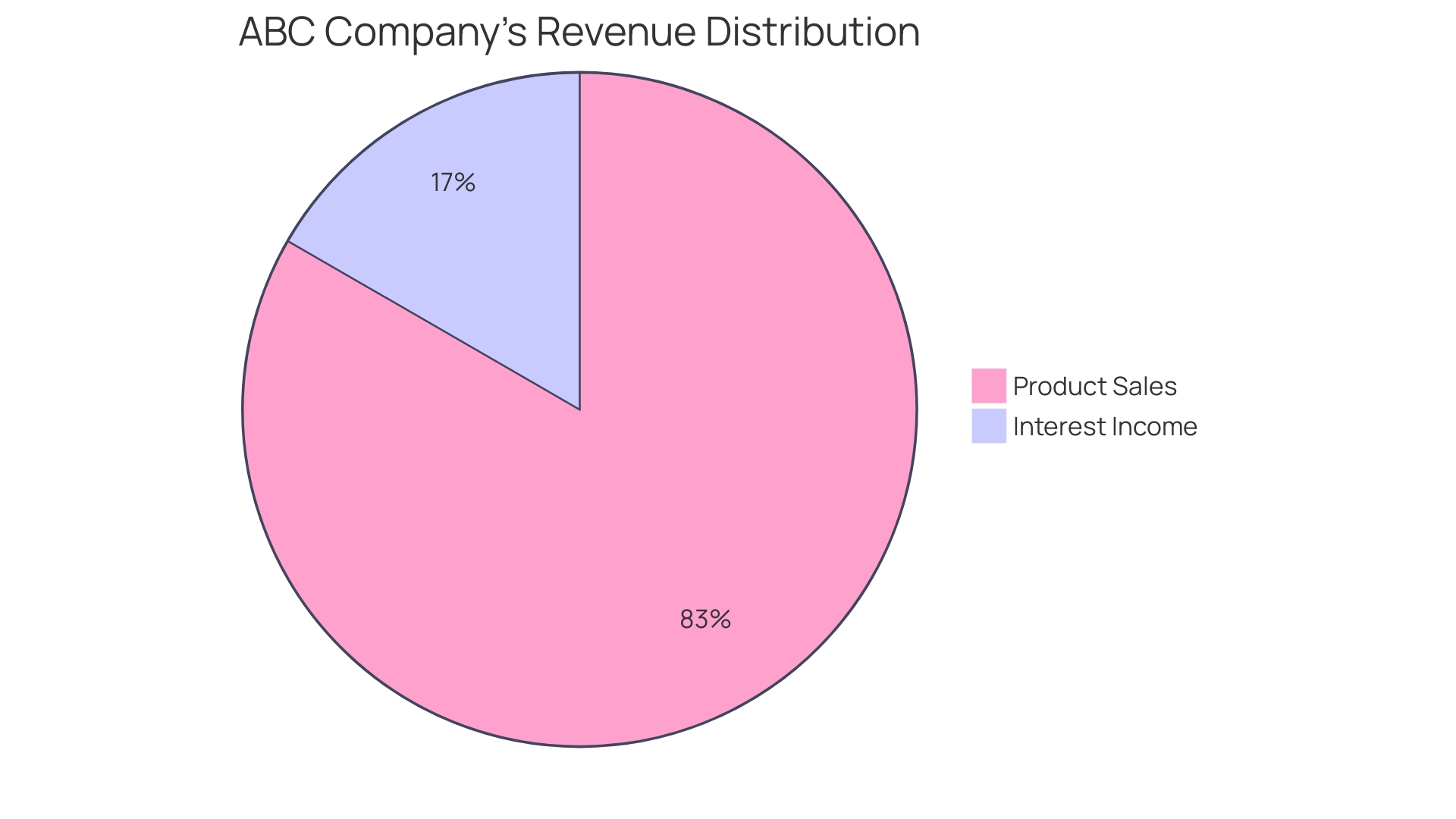
Understanding Net Revenue
The net income of your organization is, like the heartbeat of your finances—it's what you have left after taking care of all your expenses and obligations. It shows the financial performance of your enterprise once you have covered the expenses of producing your products/services (COGS). Subtracted other expenses. In terms; it's your sales minus the cost of goods sold. If your company specializes in producing top-notch furniture pieces and selling them to clients, you would initially compute the sales income and subsequently subtract the costs for materials and labor required in producing those items to ascertain your gross profit margin. Next comes the net revenue calculation where you further subtract any operating expenses, from the gross profit figure. This ultimate number is crucial as it provides insight into how your company is earning profits from sales transactions and controlling costs effectively. In a business environment with varying product combinations and profit margins knowing your total income is essential for long term progress. Businesses are constantly introducing options such as payment installments and trade in programs to make their products accessible to customers impacting sales and profits in the process. At the time industry data highlights the lasting importance of data analysis in managing financial outcomes, indicating that being well informed and adaptable in financial planning is crucial now more, than ever. A strong income isn't about staying afloat. It's, about prosperinge and being able to reinvest in your company discovering new possibilities and consistently providing great value to your clientele.
What is Net Revenue?
Net income is an indicator of a company's actual profitability compared to just looking at total sales figures like gross sales does. Net income takes into account the expenses directly associated with producing goods or providing services, such as materials and labor costs (referred to as the value of goods sold or COGS). By subtracting these expenses, from the total income number companies can calculate their earnings and achieve a better comprehension of how prosperous their primary activities are financially. This metric is significant for investors and stakeholders as it demonstrates the company's capacity to generate earnings efficiently by effectively managing its operational expenditures in conjunction with income generation. This can be illustrated by considering a furniture enterprise where the net profit is computed by deducting expenses such as wood material costs and labor fees from the sales proceeds received from customers. This calculation provides insight into the actual profitability of the sold items.
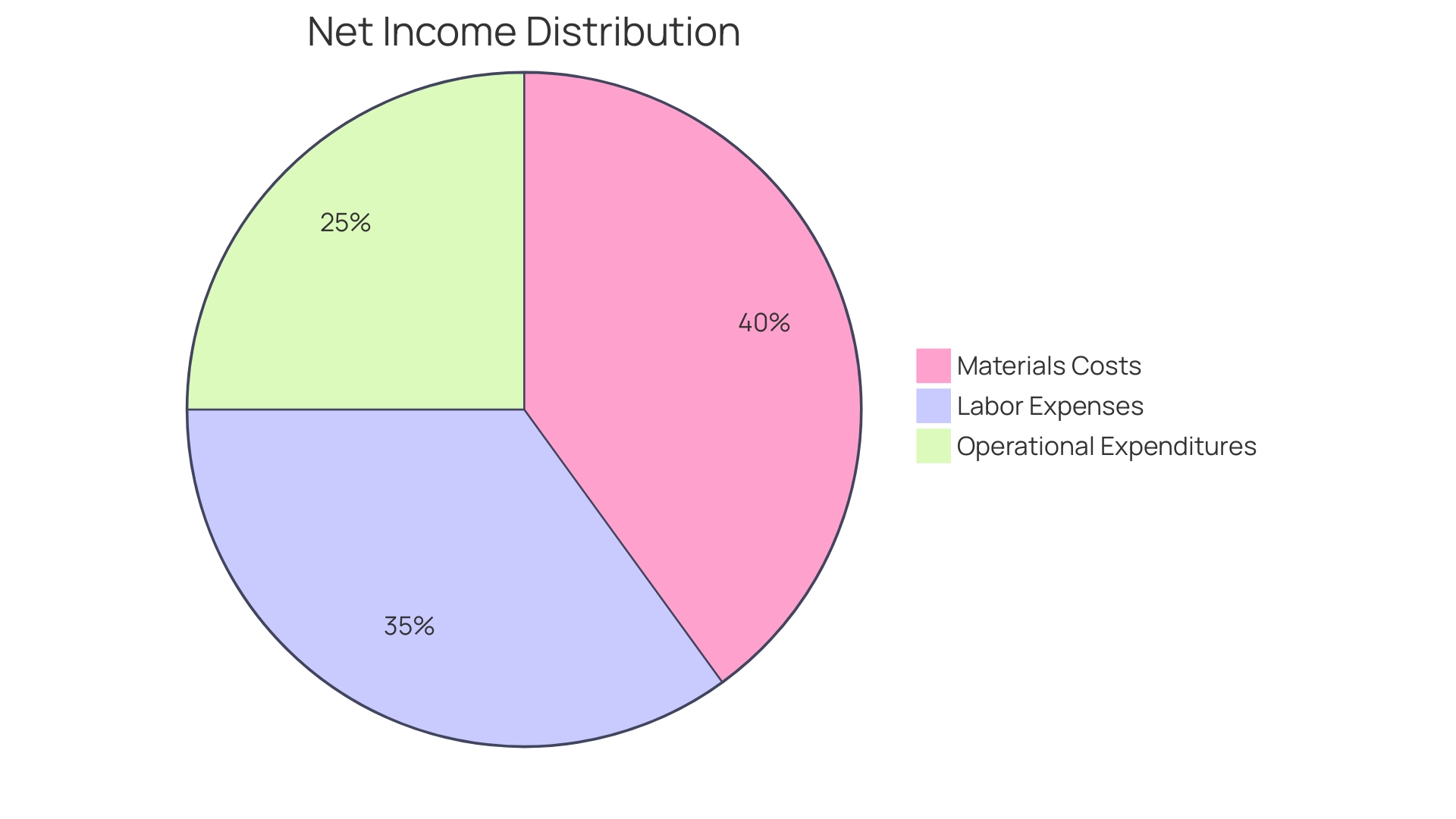
Net Revenue Formula
Comprehending the financial health of your enterprise entails computing net income - an essential procedure akin to assessing its heartbeat. The initial stage involves ascertaining the total earnings derived from sales before any deductions are taken into account. Then, subtract the expenses associated directly with the production of goods or services (COGS). Then you subtract the costs of running your company every day. Like rent and utilities. When assessing operating expenses, it's important to factor in deductions such as discounts or returned goods that could reduce your revenue total, revealing the true amount of income driving your business's success and profits. Understanding this data goes beyond tallying—it involves making well informed choices to propel your business towards increased productivity and triumph similar to successful organizations, like Monday.com that excel in expanding while upholding a healthy financial position.

Net Revenue Example
When discussing a firm's status, it is important to distinguish between the total earnings and the actual earnings after deducting expenses, which is referred to as gross profit. Gross profit is the amount that is left after deducting the expenses of goods sold from the sales generated, indicating the profitability of products or services. To make this clearer let's use an example of a fictitious enterprise like XYZ Enterprises where they have earned $50k in income with $20k being spent on expenses, like materials and labor which is known as cost of goods sold (COGS).After deducting the expenses involved in business operations from our income of $30k as gross profit figure remains unaccounted, for all expenses incurred in managing the business.
To gain a comprehensive understanding of a business's performance, it is essential to take into account the net income and the associated operating costs. In the case of XYZ Enterprises; If the operating costs come to $10 000 and we deduct this from the profit; we find that the net revenue comes to $20 000. This net amount plays a role as it shows us exactly how much income goes towards the organization's worth and value.
It is crucial for any enterprise aiming to enhance its worth beyond generating revenue to grasp these financial indicators well enough to make informed decisions and strategize effectively in a competitive market environment that varies in how operating profit is reported by organizations, as illustrated in a study; experts from the IASB emphasize how focusing on maximizing value impacts every aspect of operation.
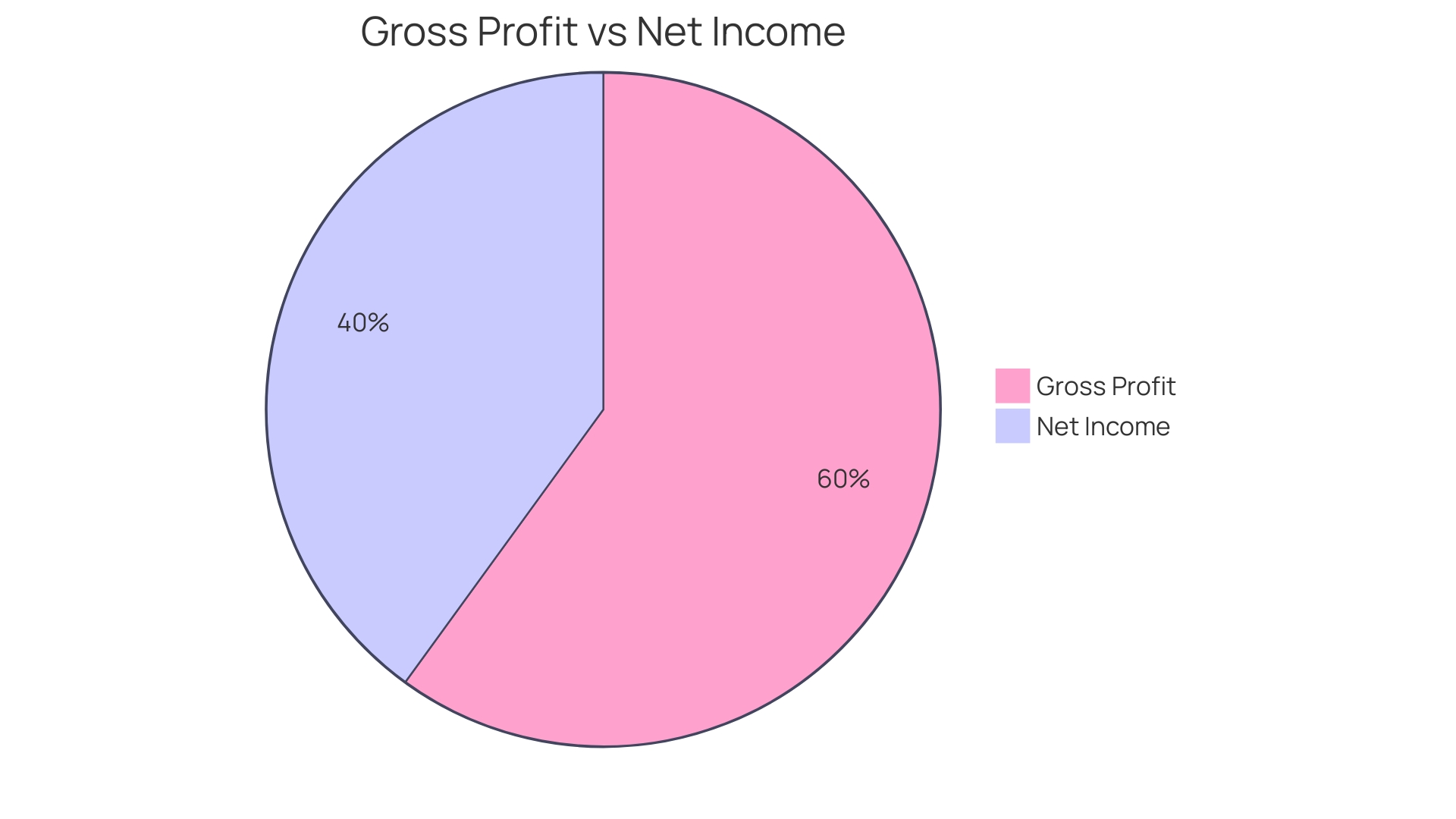
Key Differences Between Gross and Net Revenue
Revenue figures play a role in evaluating a company's financial standing. Both gross and net income provide unique insights into the economic condition of the business. When we talk about revenue. The total income received before any deductions. It's similar to measuring a firm's earning capacity in its most basic state; it essentially reflects the main profitability without considering expenses like the price of items sold (COGS) which includes direct production expenses such as materials and labor. When a business that specializes in crafting furniture wants to determine its overall profit margin, it would calculate the total revenue generated from selling products to customers and then subtract the expenses directly linked to the production of those items that were sold.
On the other hand, 'net earnings' pertains to the income that remains after subtracting all costs. A refined profitability metric that goes beyond costs to include operating expenses and taxes as part of the calculation. It provides insights, into a company's financial gains and plays a vital role in assessing long term financial health and operational effectiveness.
For instance the successful expansion of monday.com and its achievement of cash flow during a slowdown in growth highlights the significance of optimizing total income. Effective expansion involves supervising both gross and net income to ensure a larger pool of funds for investment opportunities, enhanced financial resilience, and increased value for shareholders.
Understanding these income classifications is essential for a thorough evaluation of a firm's financial condition. Let's say there's a scenario where a company reveals earnings of $20 billion in one quarter; this triggers inquiries about the scale of the organization, its investments, in resources and facilities and the percentage of profits retained from its income. However evaluating this figure without context renders it insignificant. To truly comprehend the position it is crucial to analyze the net income and get a clear view of the overall financial landscape.
Staying updated on alterations in reporting like the updates in the Quarterly Survey of Financial Statements is advantageous for making well informed choices and shaping policies effectively. For example the survey offers perspectives on sales, acquisitions and operating profits in different sectors which are valuable, for comparing data and devisng strategic plans.
In conclusion, gross income provides a glimpse of earnings while net income provides the ultimate amount that influences decisions and strategies for long-term growth and profitability.
Importance of Both Gross and Net Revenue in Financial Reporting
Income figures have a part in the financial assessment of a business; gross and net income are important indicators that provide valuable information about its economic well-being. Gross income represents the sales earnings before subtracting any expenses and serves as a standard for evaluating the overall sales performance. On the other hand, net income reflects the remaining earnings after deducting expenses such as returns, allowances, and discounts, which gives an accurate representation of the actual funds retained by the business from its activities.
It's important to understand both these numbers when assessing the health and future planning of a business. For instance; even if a company's gross income appears impressive and implies sales performance the net income could unveil a different image if expenses are high indicating possible challenges, in managing costs or setting prices. On the side a lower gross income paired with a decent net income may indicate smooth operations and healthy profit margins.
When it comes to reporting these financial numbers play a crucial role in influencing how investors see things and make decisions accordingly. Financial experts and investors closely examine these figures to assess a firm's progress and predict growth down the line. Maintaining accuracy and clarity in this information is key, by following the guidelines of global financial reporting standards and widely accepted accounting principles.
In commercial environments, it is crucial to take into account factors beyond total income in order to genuinely grasp the efficiency and sustainability of operations. Hence, both total and remaining income contribute to performing a comprehensive financial evaluation and directing a business, towards long term prosperity by not only indicating present financial well-being but also influencing future strategic choices.
Calculating Gross and Net Revenue in Practice
To maintain a financial status for your business it's vital to comprehend your yearly earnings which include both gross and net amounts. Gross earnings encompasses the income before any deductions are made. Essentially the revenue from sales. Calculating this is quite simple; you just need to sum up the earnings, from all sales without subtracting any costs or expenses. This number holds importance as it showcases the earning capacity of your business products or services.
Net income represents the amount remaining after subtracting the costs associated with the production and delivery of goods or services—referred to as Cost of Goods Sold (COGS)—from the overall sales generated by activities. These expenses encompass materials and labor costs. Play a crucial role in accurately reflecting a company's profitability through net revenue calculations. For instance if a business sells items for $100000 with COGS at $35000 the resulting gross profit would be $65000 ($100000. $35000).This number is crucial, for understanding the financial benefit derived from your activities.
Understanding the fundamentals is the start; it's crucial to appreciate the impact of efficiently handling billing systems similar to the inventive methods utilized by companies like Athelas or Meier & Marsh PT as they can greatly boost income levels. Being specific to Prix Fixe Accounting exemplifies how prioritizing effectiveness and consistent pricing models has led to saving clients amounts of time. Particularly when facing important times such, as year end audits.
Staying updated with the economic developments is crucial for companies to flourish and make informed decisions in today's competitive landscape. For instance, examining data from companies can provide valuable insights into sales trends, expenditure patterns, and profitability levels within an industry. Providing a solid foundation for strategic planning and benchmarking purposes. The Annual Integrated Economic Surveys efforts to simplify data gathering processes have made it easier for organizations to access timely information needed to steer their corporate direction effectively. This emphasizes the importance of monitoring surveys and reports regularly, for making well informed choices.
In the end, gross and net revenues hold significance than mere figures. They embody the story of your business, directing your strategic choices and molding your future development. By tracking these statistics and grasping their significance, you equip your business to navigate the competitive environment and ensure a thriving tomorrow.

Common Misconceptions: Gross Revenue vs. Gross Profit
To gauge the status of your company effectively requires focusing closely on specific indicators. Total income and gross profit are two important metrics in this context. Understanding the nuances of these terms is crucial for gaining a comprehensive overview of your company's financial health. Gross revenue represents the earnings, from sales before any expenses or taxes are taken into account providing a comprehensive view of the overall income generated by your business operations. Alternatively net profit—calculated by deducting expenses of goods sold from revenue—provides a clear view of the profitability of your goods or services. Expenses associated with manufacturing, such as materials and labor costs, make up the total amount spent on bringing your products to the market. For example if your company specializes in custom made furniture. Calculating the profit helps you figure out the actual earnings after considering the costs of materials and labor used to make each product or service you offer—a key factor in assessing your business overall profitability and guiding important decisions, about its future direction and success.
Conclusion
To sum up having a grasp of gross revenue and net revenue is crucial for evaluating a companys financial status and making informed choices.The gross revenue denotes the income generated from sales or services before any deductions, for expenses are made.It offers an insight into a companys capacity to earn and its customer reach without factoring in costs.
Conversely net revenue represents the earnings left over once all costs have been subtracted which includes both the expenses, for goods sold and operational costs. This provides a depiction of a companys profitability and overall financial performance.
Gross and net revenue each have roles in financial reporting processes.Gross revenue acts as a yardstick for evaluating the sales performance of a company; whereas net revenue offers valuable insights into the actual funds acquired from its business operations.Assessin these numbers in conjunction can unveil the effectiveness of operations,cost management and profit generation capabilities.The interplay between these two metrics is crucial, for understanding a companys health and performance.
Investors and stakeholders carefully review these measures to evaluate a companys advancement and make choices.
To determine gross and net revenue figures entails using equations; however the crucial aspect lies in interpreting and managing these data effectively.ilizing Billing systems and pricing models efficiently is essential to capitalize earnings potentials.l Access to current economic trends and thorough analysis of industry information offer valuable insights, for strategic decision making and comparison purposes.
In essence gross and net revenue go beyond numbers. They serve as the pulse of a company and influence decisions that shape its growth and success. By monitoring and comprehending these indicators businesses can maneuver through environments and secure a prosperous tomorrow.




